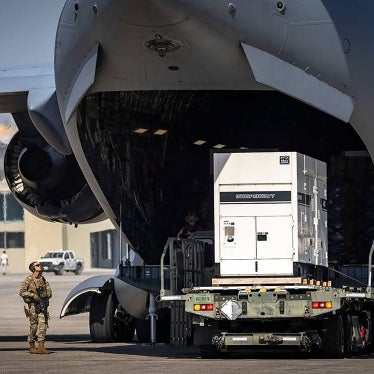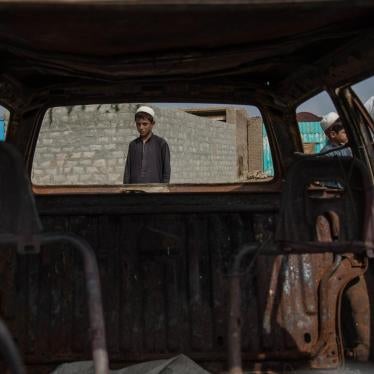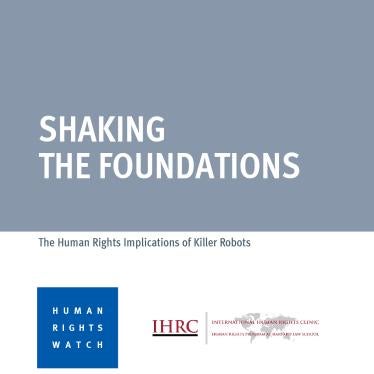She was just six when a landmine exploded beneath her in a Cambodian rice paddy, destroying her right leg. We met when she was barely a teenager as she started advocating a ban on the weapon responsible and went on to play a central role in the international campaign that resulted in the 1997 Mine Ban Treaty. Fast forward to 2012, when I accompanied this now young woman to a private meeting with the United States delegation to a Mine Ban Treaty meeting. We wanted to know when the US would conclude its policy review and join the treaty.
It was a lengthy discussion but of minimal substance. It was also the first time I had seen my colleague and friend so upset. With tears streaming down her face, she asked the American official “how many more victims will it take?” for the US to ban landmines. She said she was tired of trying to explain to her fellow survivors back home why America funds clearance of landmines and victim assistance projects but refuses to ban the weapons – as Cambodia and 160 other nations have done.
All the US diplomat would say was that the policy review would conclude “soon”. That was nearly two years ago. As the International Day for Mine Awareness and Assistance in Mine Action is marked on April 4, the US should recall the humanitarian rationale behind its early efforts to tackle the global landmine problem. American officials have downplayed the linkages between clearing landmines and banning them ever since.
Back in 1993, the US State Department released Hidden killers: The global problem with uncleared landmines. It was the first comprehensive international study of the topic. This seminal report documented how landmines were claiming lives and limbs daily in dozens of countries around the world. It said landmines were hindering economic growth and development, inhibiting the repatriation of refugees and placing “strains upon the social fabric of the society as a whole”.
The following year, then US President Bill Clinton in his address at the United Nations General Assembly became the first world leader to call for the “eventual elimination” of antipersonnel landmines. He predicted, correctly, that “ridding the world of those often hidden weapons will help to save the lives of tens of thousands of men and women and innocent children in the years to come”.
Some 20 years on, we need to ask what “eventual” means. Since 2009, the Obama administration has been reviewing policy on banning landmines and calls are intensifying for it to conclude the review with a decision to join the treaty. Senator Patrick Leahy has made a series of statements on the floor of the Senate urging the country to join without delay. The United States Campaign to Ban Landmines has called on it to “match its financial commitment to clearing landmines with a political commitment to ensure it never uses these indiscriminate weapons again”. In a letter to Obama, Human Rights Watch – which chairs the campaign – called for the US to announce the results of its review at the Mine Ban Treaty’s Third Review Conference, which opens in Maputo, Mozambique, on June 23.
Apparently what should have been a no-brainer about joining the treaty has evolved into a complex interagency debate that is more about fear of a ban’s “slippery slope”; if you give up antipersonnel mines, then you will have to give up something else. While Clinton did not sign the Mine Ban Treaty, he set 2006 as the date by which the US would join the treaty. His successor, George W. Bush, scuttled that plan – declaring that America would never join the treaty.
A 2004 policy decision by Bush now prohibits US use anywhere in the world of so-called dumb antipersonnel landmines, which lack a self-destruct feature, but permits the use of self-destruct mines indefinitely. The Bush administration policy still stands as the Obama administration’s policy review grinds on.
Despite not joining the treaty, the US has not used antipersonnel landmines – either ‘smart’ or ‘dumb’ – since the first Gulf War in 1991. It has not exported antipersonnel mines since 1992 and has not produced them since 1997. This record shows that the US military can employ alternative strategies, tactics, and weaponry without resorting to antipersonnel mines. The US has also spent more than $1bn to develop and produce systems that could be considered alternatives.
Concerns over the need to protect South Korea from the North have been described as potential ‘sticking points’ in the policy review. However, numerous retired military officers have questioned the utility of using antipersonnel landmines in the event of an invasion, citing the overwhelming technological superiority of other weapons in the US-South Korean arsenal. The mines already laid in and near the demilitarised zone between North and South Korea are the responsibility of South Korean forces and not America.
Two decades on, it is no longer just landmine survivors and activists urging the US to ban landmines but rather an entire community of 161 nations including Australia, Japan, the United Kingdom and all the rest of the North Atlantic Treaty Organisation – and other close allies. Obama, as commander in chief, needs to do the right thing and ban landmines now.









